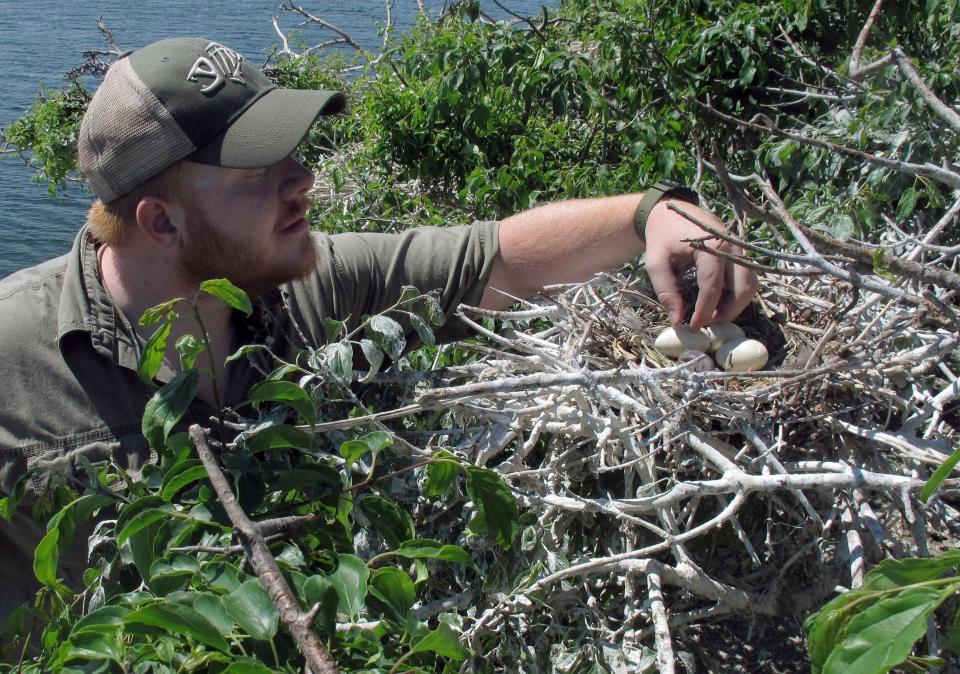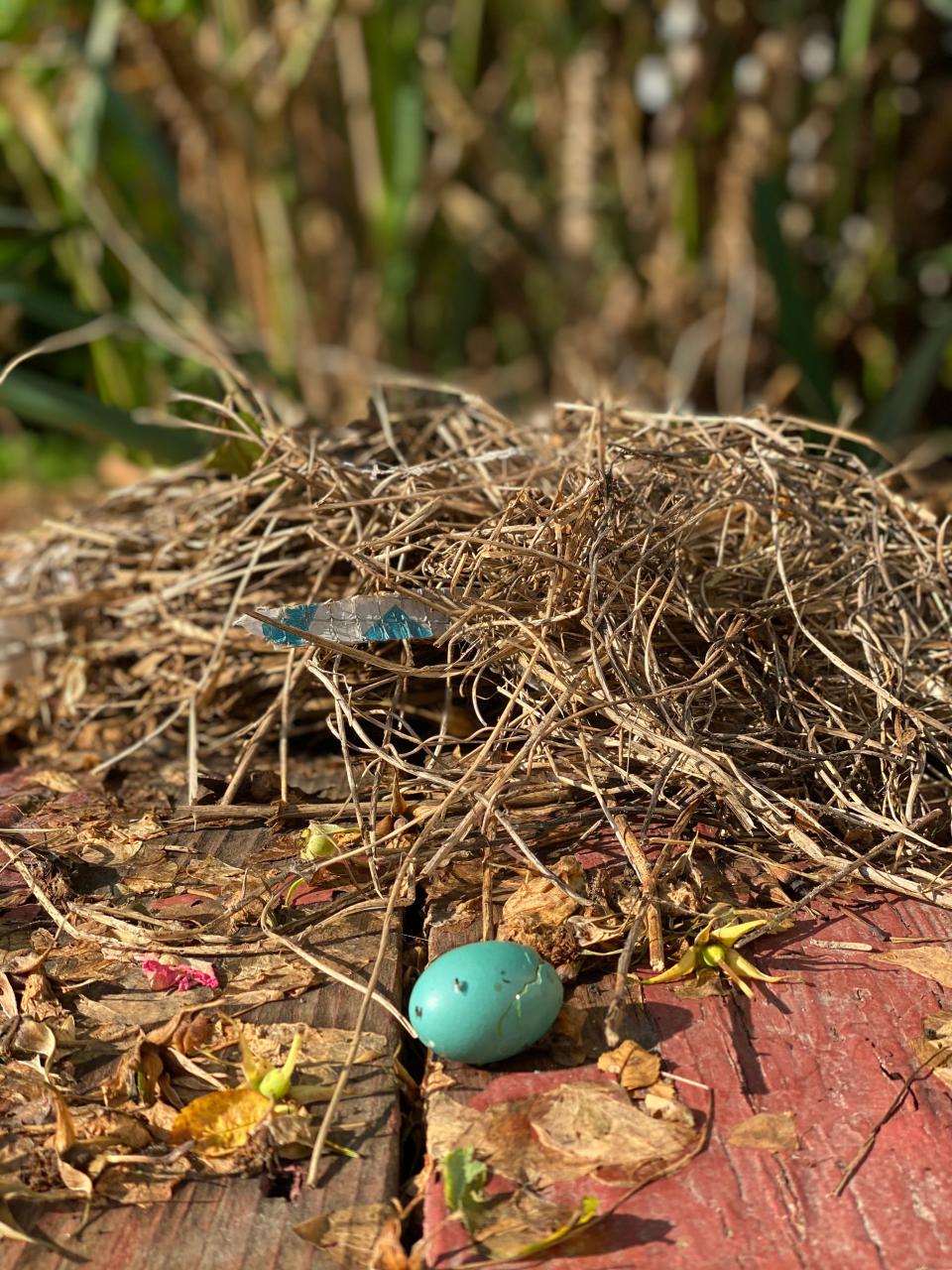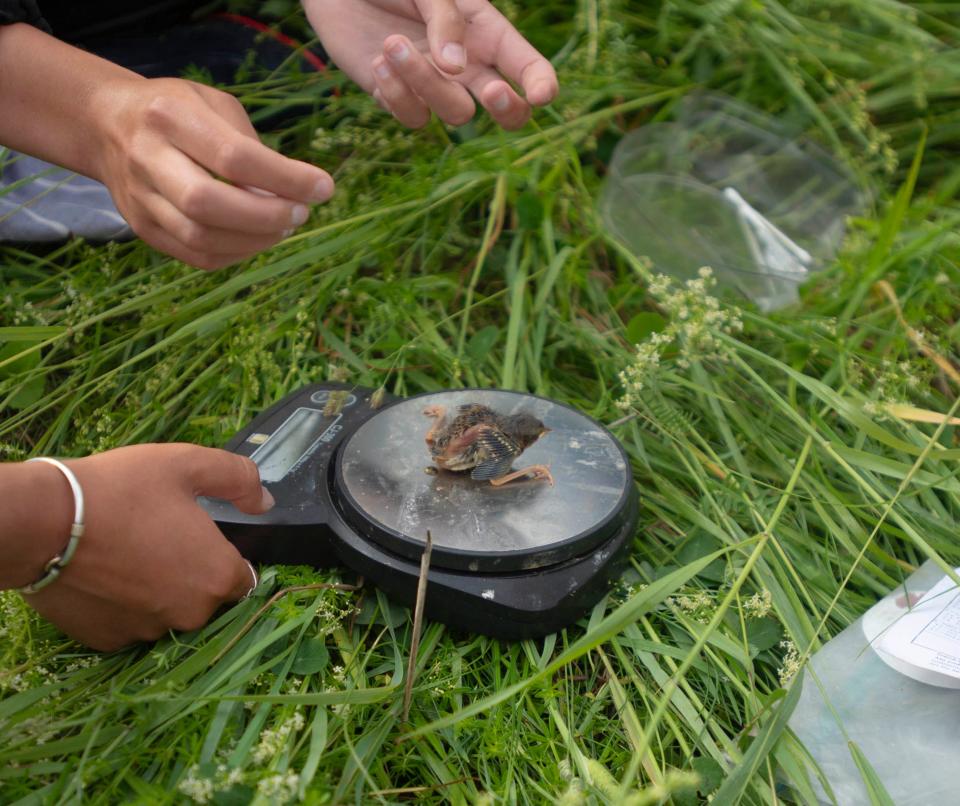A baby bird out of its nest may not be helpless. Here's when to provide help
A baby bird falls out of its nest onto the ground — what should you do? A well-meaning person may want to help out, but sometimes it's best to just let nature be.
Vermont Fish & Wildlife shared information with birdwatchers in it's Bird Report about handling baby birds and directed readers to an Audubon article that goes into detail about when to help and when not to.
Breeding season is in full swing right now, according to the bird report, and people may already see chicks in nests of ducks, geese, robins and bald eagles.
While observing nests up close with speckled eggs turning into hatchlings and fledglings and finally adult birds, here's when human involvement is helpful and harmful.

When not to help out a baby bird
Among the baby birds that get brought to the Atlanta Wild Animal Rescue Effort, about 80 percent of them have been kidnapped, according to an education director interviewed in an Audubon article.
A person may think a baby bird out of its nest is in distress, when in reality it is fine and a normal part of its development learning to fly. It isn't uncommon for a fledgling to find itself on the ground, and in many cases the parents are nearby observing and are waiting for the human to leave before helping.
If the bird is a fledgling — it has feathers and can hop — and isn't visibly injured or in danger from a predator, the Audubon Society says to leave it alone.
A hand-raised fledgling could confuse the human as parent and not develop the skills to survive and live as a bird.

When to help a baby bird or egg
There are times when it can be helpful to return an egg or bird into its nest.
Popular belief that a mother bird could reject a baby or egg due to the scent of the human who handled it is false, according to Audubon, which says a bird's smell is not that defined.
Unlike a fledgling, a nestling is almost always in need of help. Nestlings are recently hatched birds that haven't had their feathers come in yet and may only have a few fluffs. They are unable to walk on their feet and waddle around from one wing to the other. They can be easy to spot as they can appear naked and alien-like.
If this type of baby bird has fallen out of it's nest, it is best to put them back and the parent will resume care, according to Audubon.

If the nest can't be located, Audubon suggests crafting a nest from something like a small strawberry container and to put a scrap of t-shirt or straw in it.
After gently placing the bird within, affix the nest high up in a tree near where the baby bird was found. If the baby bird isn't located by its parents in an hour, that is when it is time to call a wildlife rescue center, according to the article.
There are times when people may want to help a fledgling that is injured. Signs to look out for include a cat dragged it in, it can't stand or hop properly or the presence of flies indicate an open wound. If the feathers are wet but it isn't raining, it could have an illness affecting the preening oil system. Or, if the belly looks sunken in like a shriveled and wrinkled prune, then it could be dehydrated.
Getting an injured bird rehabilitated
The Audubon Society recommends getting an injured bird to a wildlife rehabilitator.
Vermont Fish & Wildlife provides a map and contact info for all of the licensed wildlife rehabilitators in the state. There are only two providers who can take threatened and endangered species, so it is important to know what type of animal you are dealing with and what the rehabilitator can take.
Here is where to find the 2022 list of Vermont wildlife rehabilitators: https://vtfishandwildlife.com/sites/fishandwildlife/files/documents/Learn%20More/Living%20with%20Wildlife/Rehabilitation/Wildlife_Rehabilitator_Locator.pdf.

When preparing the bird for transport, you can place the bird in a box with air holes and keep it warm by putting a heating pad underneath. Resist the urge to feed the bird, the article says, because birds fed by inexperienced bird handlers often get food in their lungs.
Vermont Fish & Wildlife cautions it is illegal for anyone to take a wild animal into captivity unless they are a licensed wildlife rehabilitator.
Contact reporter April Barton at abarton@freepressmedia.com or 802-660-1854. Follow her on Twitter @aprildbarton.
This article originally appeared on Burlington Free Press: If a baby bird is on the ground, here's when to provide help

